The Film Team wraps up groundbreaking projects
*German movie The Emden Men
*Deepa Mehta’s Midnight’s Children
Ruwini JAYAWARDANA
It was a transition from ancient Germany to
the Indian, Bangladeshi and Pakistani suburbs. When one project finished
shooting, the camera began rolling on the other. The themes, main cast
and crew were poles apart. Therefore work had to be planned from A to Z
to bring a wave of change to the second movie. After hectic months of
planning, discussing and seeing that everything ran smoothly The Film
Team is content to announce the curtain call of two major films shot in
local soil.
Handling Berengar Pfahl’s German production
The Emden Men and Oscar nominee Deepa Mehta’s Midnight’s Children at the
same time was a challenge but one that the team: chairman Ravindra
Randeniya, production designer Errol Kelly, line producer Anisley de
Silva and sales and marketing director Gopi Darmaratnam, was ready to
tackle.
“Mehta’s movie arrived for shooting when we
were in the last stages of shooting The Emden Men. Juggling the two was
not easy. The demands were very heavy but we were confident that we will
pull through. It was a matter of identifying the requirements and
getting the right people to handle the tasks,” Randeniya opined on The
Film Team’s latest ventures.
Some of The Film Team’s success formula
* Chandani: The Elephant Whisperer by Arne
Birkenstock, Germany n Airtel by Amit Sharma, India n Ring Of Fire by RW
International, Germany * Dilmah Tea by Fowzia Ganjee for Zabardast
Films, India * Coca Cola, India * Dream Hotel Sri Lanka and Dream Hotel
Maldives for Otto W Retzer, Germany
|
Mehta on Midnight’s
Children
* Translating Rushdie’s book into film was not as tough
as one would think, says Mehta. She adds that Rushdie’s
involvement made the experience fun.
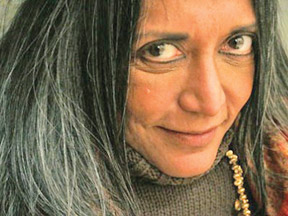 “Luckily Salman wrote the script so it was not such a
difficult process. I think both of us really enjoyed it. It
wasn’t heartbreaking at all, it just was realizing that the
book is a different animal and the film is an adaptation of
it but is not necessarily a facsimile of it.” It helped,
says Mehta, that they shared a vision for the tale. “Luckily Salman wrote the script so it was not such a
difficult process. I think both of us really enjoyed it. It
wasn’t heartbreaking at all, it just was realizing that the
book is a different animal and the film is an adaptation of
it but is not necessarily a facsimile of it.” It helped,
says Mehta, that they shared a vision for the tale.
“I think we were always on the same page and that was
really good,” she says. Mehta is best-known for her Elements
trilogy, Earth (1996), Fire (1998) and the Oscar-nominated
Water (2005), films that explore uncomfortable issues
beneath the veneer of Indian society. |
Pfahl on The Emden Men
* Interestingly the seed of the film was first planted in
Pfahl’s mind by a Sri Lankan when he uttered the popular
Sinhala slang word Amden to him.
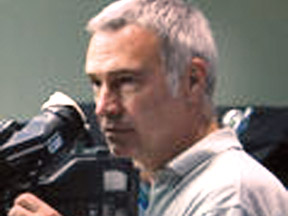 Wondering if it is an
English word he had done research and come across the story
of the ship which was destroyed at the Battle of Cocos. Wondering if it is an
English word he had done research and come across the story
of the ship which was destroyed at the Battle of Cocos.
“It is not a war film but a film which relates how people
they can survive in a difficult situation. I decided to
shoot in Sri Lanka because there are some old buildings in
good condition with the colonial atmosphere here,” he said.
Pfahl is known for his prize-winning movies Britta and
Tanja. |
The Emden Men
The Emden Men had landed on their lap through Kelly. Both had worked
together in a previous production and Pfahl had been impressed with
Kelly’s creative skills.
The film is set on a true story rotating around a naval officer who
served the German army in World War I. The film deals with the odyssey
of his return home once his ship was sunk during combat.
“We had to create a Tsingtao, a German base in China at
Ranmihithenna. We added picket fences, flowerbeds and sign posts to give
this aura. The Germans sailed away on an abandoned ship named Ayesha.
The director sent us a reference picture and luckily, one of our
Malaysian colleagues led us to a vessel named Raja Laut which had a
striking resemblance to Ayesha. We gave the ship a make over. That is
what you see in the movie but the alterations need to be done in a
manner so that it could be brought back to its original form and handed
over to its owners again,” Kelly explained.
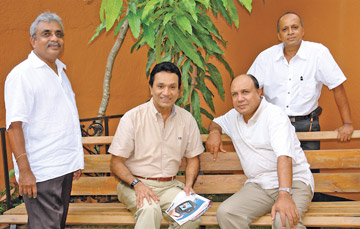 |
|
The Film
Team: Gopi, Ravindra, Errol and Anisley |
They also built the interior of Ayesha at Ranmihithenna. Once again
Kelly’s expertise came to the rescue when the German crew queried if a
crane had to be brought to create the rocking motion of the boat. “I
suggested using the basic rocking horse principle. The interior
structure was designed in a way so that it could be done manually,” he
added.
“The directors were going to head off to Tunisia to shoot some
scenes. Errol showed them the sand dunes in Kirinda. In the end, those
scenes too were shot in Sri Lanka. It all depends on how you market the
location,” de Silva said.
The cast includes both German and Sri Lankans. Ken Duken of Quentin
Tarantino’s Inglourious Basterds fame plays the main role. Some of the
main locations were Ranmihithenna, the sand dunes in Kirinda and the
Maradana Railway Station. The theatrical release is planned for early
2012.
Midnight’s Children
Deepa Mehta’s film was trickier to handle because the team was not
sure exactly what she was hunting for. The line producer and assistant
art director of the movie visited the island last year to see some of
the possible locations tracked down by the team. The film was set in the
slum community so they decided on Apple Waththa near Khettarama as the
perfect location.
Kelly designed slums with flat roofs, grills and drawings to capture
the Indian atmosphere. He designed the houses with little allies so that
the actual houses which exist blend nicely with the constructions,
minimizing the production cost by having to build extra huts to show the
congested neighbourhood.
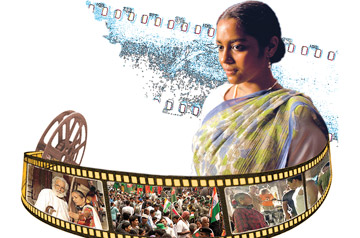 Young British actor Satya Bhabha who gained fame with Scott Pilgrim
takes the lead in the story which is based on Booker-winning author
Salman Rushdie’s panoramic 1981 allegory of the birth of modern India.
Other characters are portrayed by Irfan Khan, Shriya Saran, Shabana
Azmi, Anupan Kher, Soha Ali Khan, Seema Biswas, Siddarth, Nandita Das,
Rahul Bose, Samart Chakrbarti and Chandan Roy Sanyal. Young British actor Satya Bhabha who gained fame with Scott Pilgrim
takes the lead in the story which is based on Booker-winning author
Salman Rushdie’s panoramic 1981 allegory of the birth of modern India.
Other characters are portrayed by Irfan Khan, Shriya Saran, Shabana
Azmi, Anupan Kher, Soha Ali Khan, Seema Biswas, Siddarth, Nandita Das,
Rahul Bose, Samart Chakrbarti and Chandan Roy Sanyal.
“The story is set in three countries: India, Pakistan and Bangladesh.
Therefore we had to make sure that every detail fits in. It was a
whirlwind of activity as one day we have Indian settings and the next a
Bangladeshi backdrop. We had to keep track on the details. For instance
you cannot mix up the language on signposts,” Kelly said with a smile.
Another difficulty that they faced was allocating military equipment
for the victory parade.
“Our army possesses modern equipment and most of the old ones were
discarded. However the forces were very helpful. They put together some
of the vehicles and located some equipment from the Rock House Army
Camp,” Randeniya said.
He also added that the film comprises a scene with seven cobras are
present. It was not easy to find the snake charmers and less easier
convincing the cast and crew of their capabilities to act in the film.
“We had to put up a show for them to convince them that they will fit
into the scenes. We collected performers like jugglers and others who
can perform circus acts from all areas of the country. Shriya Saran, the
lead actress of Sivaji: The Boss, the highest grossing Tamil film in
2007, did a dance item on a truck in Pettah. Onlookers were simple
stunned,” he said.
Scenes were shot at St Joseph’s College, S Thomas’ College, the
Mayor’s residence, Maradana Railway station, Flower Road, Galle Face
Hotel and many other locations. More than 200 Sri Lankans as a crew
worked in the project. The film was shot entirely in Sri Lanka for 70
days in 64 locations.
The Film Team
Initiated in 2007, The Film Team comprises four key players with over
25 years of experience in the field. Starting off on a successful note
with Uberto Pasolini’s award winning Machan, the four individuals
decided to form an alliance, linked by professionalism, passion and
commitment. After a brainstorming session the idea of ‘teamwork’ was on
everyone’s mind. They decided to name themselves ‘The Film Team’,
embodying the slogan: ‘our past will help your future’.
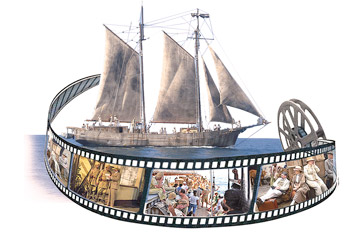 |
|
Scenes from The Emden Men |
Their first break was in commercials as they put together a software
advertisement for a German company. The action packed scenes were shot
in Habarana, Sigiriya and Matale. Next they set up a jetty in Maldives
for a chocolate advertisement. Kelly designed the landing stage which
was built by Sri Lankan craftsmen. Then more projects flowed as word
spread.
“Films were scarce due to the terrorist problems but since the dawn
of peace, more directors have expressed their keenness to shoot in Sri
Lanka. Directors brief us or send us a script. Sometimes they send us
visuals on what they need. Errol takes over and places his suggestions.
They discuss and a representative in sent for a scouting. Once they
finalize their plans, the team heads over for the shoot,” Dharmaratnam
summed up on how a deal is closed.
The Golden Lola award winning Chandani: The Elephant Whisperer was
the first feature film that they handled.
They even convinced Mani Ratnam that Sri Lanka had the perfect
settings to shoot Raavan before the South Indian film industry
protested.
The Team’s mantra is to ‘keep production simple, fast and exciting
while maintaining the highest standards possible’.
“Films not only bring income but they also send across a very
positive image of the country. It attracts a lot of media. Sri Lankan
possesses a lot of geographical factors which cannot be found in any
other country. We are geared to provide the best service with government
support,” Randeniya said. |



